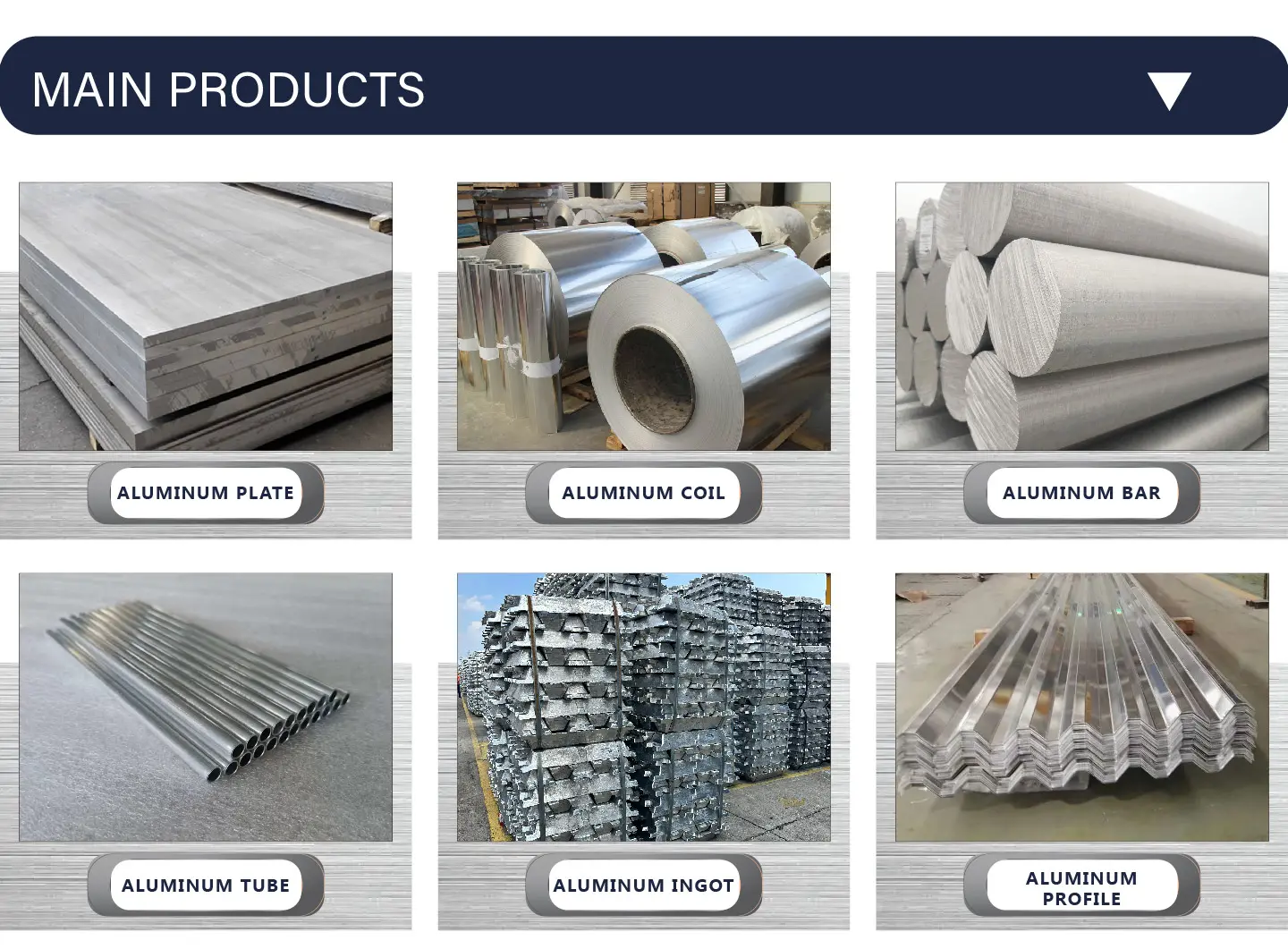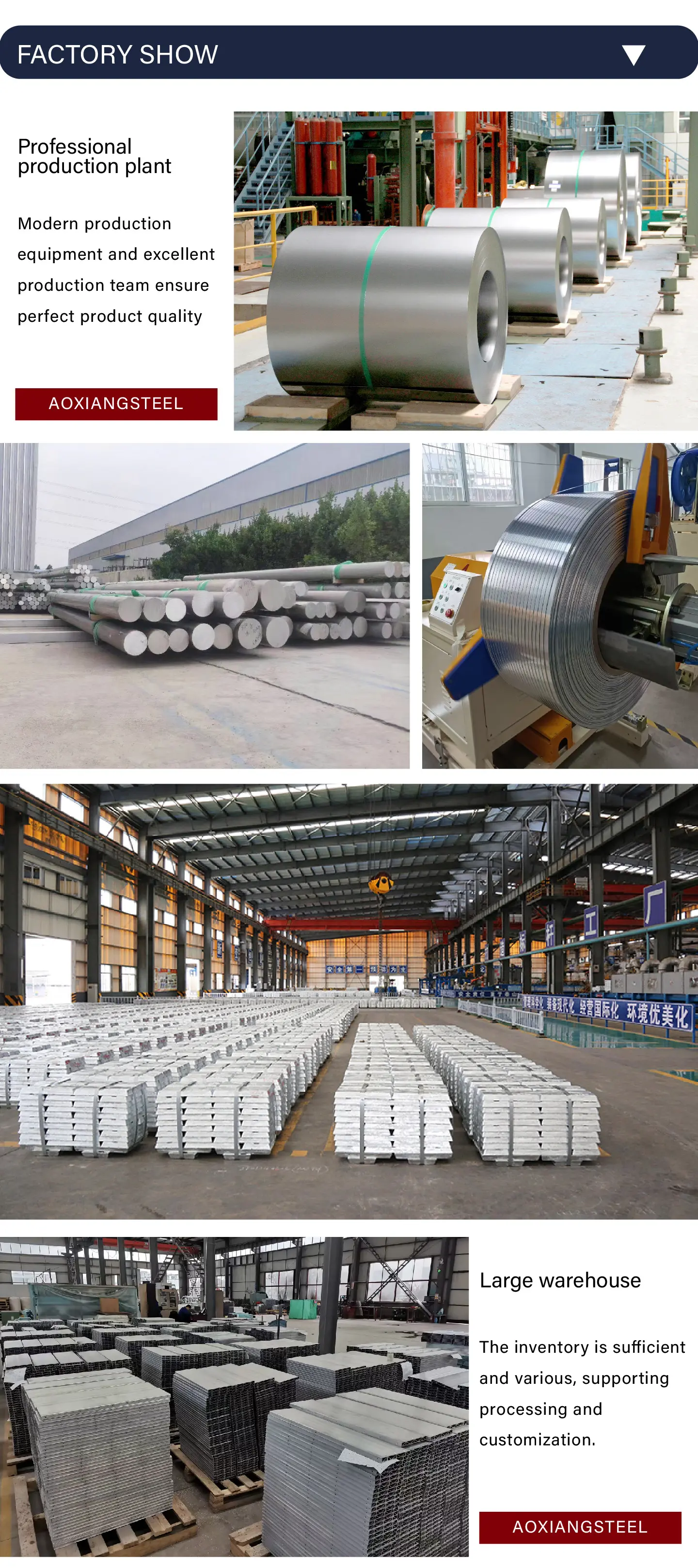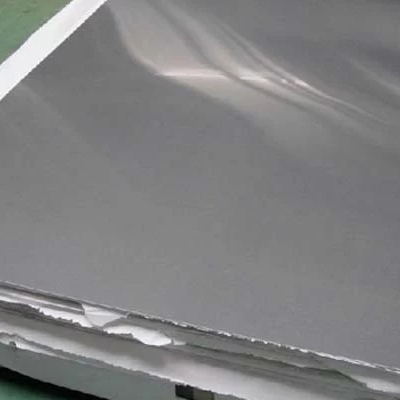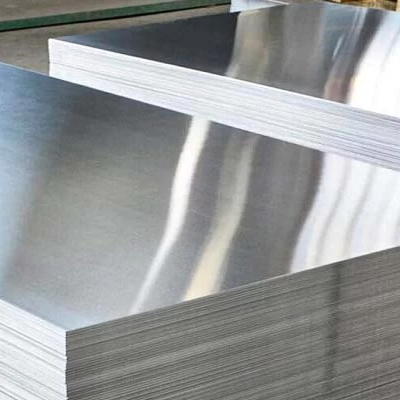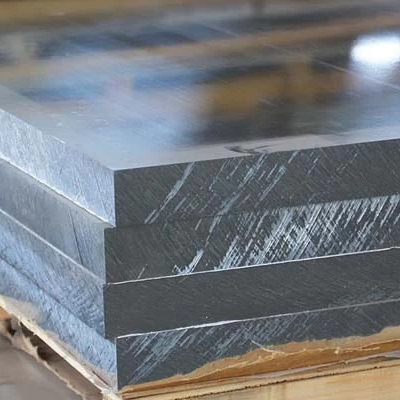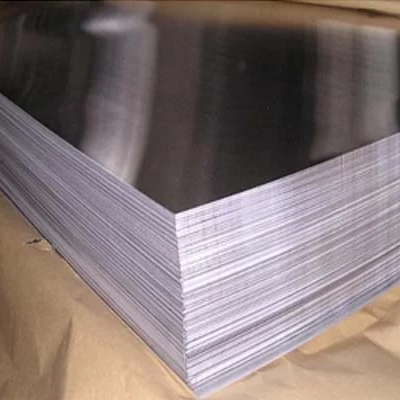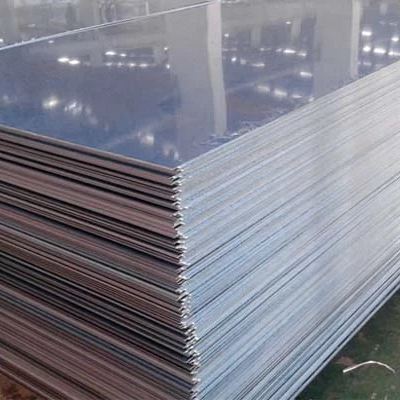
3004 Aluminum Alloy Plate
Aluminum alloy 3004 is a medium strength aluminum alloy with manganese and magnesium as its primary alloying elements. It has higher strength than 3003 alloy but lower ductility. 3004 aluminium alloy is an alloy in the wrought aluminium-manganese family (3000 or 3xxx series).
Request A Quote?
Product Details
Aluminum alloy 3004 is a medium strength aluminum alloy with manganese and magnesium as its primary alloying elements. It has higher strength than 3003 alloy but lower ductility. 3004 aluminium alloy is an alloy in the wrought aluminium-manganese family (3000 or 3xxx series). It is similar to the 3003 alloy, except for the addition of approximately 1% magnesium. It can be cold worked (but not, unlike some other types of aluminium alloys, heat treated) to produce tempers with a higher strength but a lower ductility. Like most other aluminium-manganese alloys, 3003 is a general-purpose alloy with moderate strength, good workability, and good corrosion resistance. It is commonly rolled and extruded, but typically not forged. As a wrought alloy, it is not used in casting.
3004 aluminum alloy is commonly used in the making of beverage cans. It was developed to satisfy the need for thinner gauges in can-stock, and thereby to some extent replaced its predecessor 3003 alloy in the making of beverage cans. Can-stock can be made thinner due to the addition of 1% magnesium, which contributes in solid solution strengthening.
Chemical Composition:
| Component Elements | Original Value | Comments |
| Aluminum, Al | 95.5 - 98.2 % | As remainder |
| Copper, Cu | <= 0.25 % | |
| Iron, Fe | <= 0.70 % | |
| Magnesium, Mg | 0.80 - 1.3 % | |
| Manganese, Mn | 1.0 - 1.5 % | |
| Other, each | <= 0.05 % | |
| Other, total | <= 0.15 % | |
| Silicon, Si | <= 0.30 % | |
| Zinc, Zn | <= 0.25 % |
Mechanical Properties:
| Mechanical Properties | Original Value | Comments |
| Hardness, Brinell | 79 | 500 kg load with 10 mm ball. Calculated value. |
| Hardness, Knoop | 102 | Converted from Brinell Hardness Value |
| Hardness, Vickers | 89 | Converted from Brinell Hardness Value |
| Tensile Strength, Ultimate | 295 MPa | |
| Tensile Strength, Yield | 285 MPa | |
| Elongation at Break | 2.0 % @Thickness 1.60 mm |
In 5 cm |
| Modulus of Elasticity | 69.0 GPa | Average of Tension and Compression. In Al alloys, the compressive modulus is typically 2% greater than the tensile modulus |
| Poissons Ratio | 0.35 | |
| Shear Modulus | 25.0 GPa | |
| Shear Strength | 180 MPa | Calculated value. |
| Temper | Specified Thickness(in) | Tensile Strength - KSI | Elongationin 2 inches % | |||
| Ultimate | Yield | |||||
| Min | Max | Min | Max | |||
| H12 | 0.008 - 0.020 | 27.6 | 34.8 | - | - | 2 |
| H12 | 0.020 - 0.059 | 27.6 | 34.8 | - | - | 3 |
| H12 | 0.059 - 0.118 | 27.6 | 34.8 | - | - | 4 |
| H12 | 0.118 - 0.236 | 27.6 | 34.8 | - | - | 5 |
| H12 | 0.236 - 0.394 | 27.6 | 34.8 | - | - | - |
| H14 | 0.008 - 0.020 | 31.9 | 38.4 | - | - | 1 |
| H14 | 0.020 - 0.059 | 31.9 | 38.4 | - | - | 2 |
| H14 | 0.059 - 0.118 | 31.9 | 38.4 | - | - | 2 |
| H14 | 0.118 - 0.250 | 31.9 | 38.4 | - | - | 3 |
| H16 | 0.008 - 0.020 | 34.8 | 41.3 | - | - | 1 |
| H16 | 0.020 - 0.059 | 34.8 | 41.3 | - | - | 1 |
| H16 | 0.059 - 0.118 | 34.8 | 41.3 | - | - | 2 |
| H16 | 0.118 - 0.250 | 34.8 | 41.3 | - | - | 2 |
| H18 | 0.008 - 0.020 | 37.7 | - | - | - | 1 |
| H18 | 0.020 - 0.059 | 37.7 | - | - | - | 1 |
| H18 | 0.059 - 0.118 | 37.7 | - | - | - | - |
| H18 | 0.118 - 0.250 | 37.7 | - | - | - | - |
| H19 | 0.008 - 0.020 | 39.2 | - | - | - | 1 |
| H19 | 0.020 - 0.059 | 39.2 | - | - | - | 1 |
| H19 | 0.059 - 0.118 | 39.2 | - | - | - | - |
| H19 | 0.118 - 0.250 | 39.2 | - | - | - | - |
| H22/32 | 0.008 - 0.020 | 27.6 | 34.8 | - | - | 4 |
| H22/32 | 0.020 - 0.059 | 27.6 | 34.8 | - | - | 5 |
| H22/32 | 0.059 - 0.118 | 27.6 | 34.8 | - | - | 6 |
| H22/32 | 0.118 - 0.250 | 27.6 | 34.8 | - | - | 7 |
| H22/32 | 0.236 - 0.394 | 27.6 | 34.8 | - | - | - |
| H24/34 | 0.008 - 0.020 | 31.9 | 38.4 | - | - | 3 |
| H24/34 | 0.020 - 0.059 | 31.9 | 38.4 | - | - | 4 |
| H24/34 | 0.059 - 0.118 | 31.9 | 38.4 | - | - | 4 |
| H24/34 | 0.118 - 0.250 | 31.9 | 38.4 | - | - | - |
| H26/36 | 0.008 - 0.020 | 34.8 | 41.3 | - | - | 3 |
| H26/36 | 0.020 - 0.059 | 34.8 | 41.3 | - | - | 3 |
| H26/36 | 0.059 - 0.118 | 34.8 | 41.3 | - | - | 3 |
| H26/36 | 0.118 - 0.250 | 34.8 | 41.3 | - | - | - |
| H28/38 | 0.008 - 0.020 | 37.7 | - | - | - | 2 |
| H28/38 | 0.020 - 0.059 | 37.7 | - | - | - | 3 |
| H28/38 | 0.059 - 0.118 | 37.7 | - | - | - | - |
| H28/38 | 0.118 - 0.250 | 37.7 | - | - | - | - |
| O/H111 | 0.008 - 0.020 | 22.5 | 29 | - | - | 13 |
| O/H111 | 0.020 - 0.059 | 22.5 | 29 | - | - | 14 |
| O/H111 | 0.059 - 0.118 | 22.5 | 29 | - | - | 15 |
| O/H111 | 0.118 - 0.250 | 22.5 | 29 | - | - | 16 |
Thermal Properties:
| Thermal Properties | Original Value | Comments |
| CTE, linear | 13.3 µin/in-°F @Temperature 20.0 - 100 °C |
AA; Typical; average over range |
| 21.5 µm/m-°C @Temperature -50.0 - 20.0 °C |
||
| 23.2 µm/m-°C @Temperature 20.0 - 100 °C |
||
| 24.1 µm/m-°C @Temperature 20.0 - 200 °C |
||
| 25.1 µm/m-°C @Temperature 20.0 - 300 °C |
||
| Specific Heat Capacity | 0.893 J/g-°C | |
| Thermal Conductivity | 1130 BTU-in/hr-ft²-°F | AA; Typical at 77°F |
| Melting Point | 1165 - 1210 °F | AA; Typical range based on typical composition for wrought products >= 1/4 in. thickness |
| Solidus | 1165 °F | AA; Typical |
| Liquidus | 1210 °F | AA; Typical |
Machinability
Aluminium / Aluminum 3004 alloy has good machinability in the hard temper. Oil lubricant is used for performing machining operations.
Forming
Aluminium / Aluminum 3004 alloy can be formed using conventional hot working or cold working methods.
Welding
The Aluminium / Aluminum 3004 alloy can be welded using TIG or MIG welding techniques.
Heat treatment
Aluminium / Aluminum 3004 alloy is a non-heat treatable alloy.
Forging
Aluminium / Aluminum 3004 alloy is forged at temperatures ranging from 372 to 510°C (700 to 950°F).
Hot Working
Aluminium / Aluminum 3004 alloy is hot worked at 260 to 483°C (500 to 900°F).
Cold Working
Aluminium / Aluminum 3004 alloy can be cold worked up to 75% reduction of area using conventional techniques. This process should be followed by annealing if it is cold worked beyond 75% reduction of area.
Annealing
Aluminium / Aluminum 3004 alloy is annealed at 344°C (650°F) followed by cooling in air.
Hardening
Aluminium / Aluminum 3004 alloy can be annealed by cold working.
Applications
Aluminium / Aluminum 3004 alloy is used in sheet metal work. It is also used in manufacturing storage tanks.

